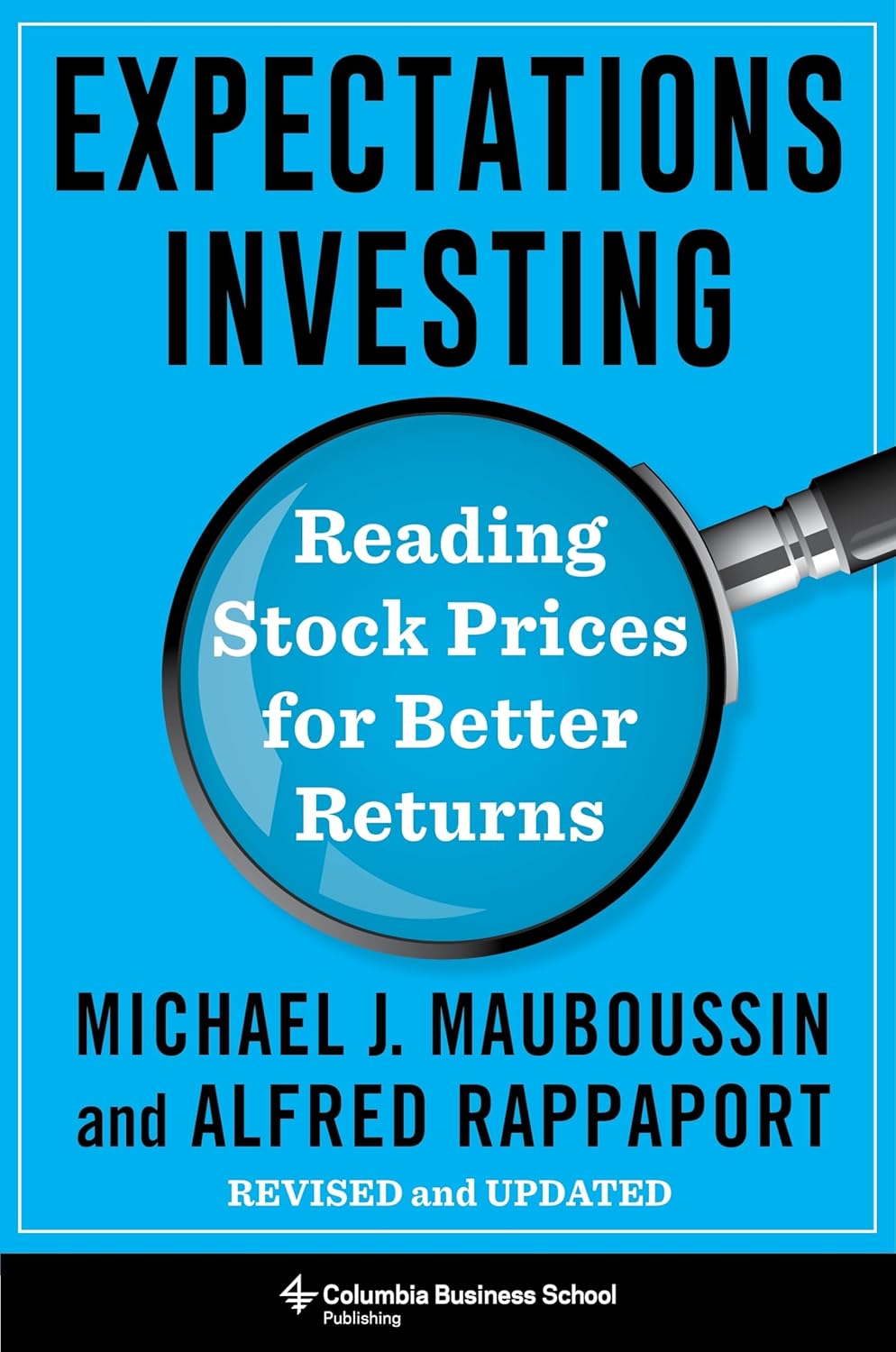This Week’s Book: Reverse-Engineering Stock Prices
In addition to entrepreneurship, I love investing. It’s an intellectual sport that you can never master and that requires continual learning. A few weeks ago, I listened to a podcast with investor and Columbia Business School professor Michael Mauboussin in which he described the concept of expectations investing. The gist is that it’s a method of figuring out what’s already factored into a stock’s current price. He mentioned his book, which details the method, so I bought a copy.
I read the updated and revised version of Expectations Investing, which describes an interesting framework for deconstructing a stock price. The main principle in this framework that makes it different from other valuation methods is that you don’t forecast cash flows to determine the worth of a company and its stock price. Instead, you estimate expectations that are factored into the current stock price to determine what the market anticipates cash flows will be and how many years into the future the market is forecasting those cash flows (i.e., the forecast period). It’s akin to starting at the end and working backward, which intrigued me. Once you know what the market is expecting, you can determine if those expectations are reasonable or will likely lead to revisions (i.e., changes in the stock price).
The framework is great, but it’s not for beginners. I think of it as a graduate-level approach to value investing. It’s not easy to execute initially, but with work and practice, it can be learned by anyone. The book’s website offers useful tutorials that supplement learning.
Other things I like about this book are the “expectations infrastructure” frameworks around thinking about company value creation (value triggers, value factors, and value drivers). The three methods for estimating the continuing value of a company in a discounted cash flow model that incorporates inflation expectations were very useful. And I found his step-by-step approach to determining a company’s cost of capital useful.
I’m glad I read this book. It led to my doing some modeling and analysis of companies using this method, which was both frustrating and fun. If you’re interested in learning about advanced value investing and understanding what’s priced into a stock already, consider reading Expectations Investing.




